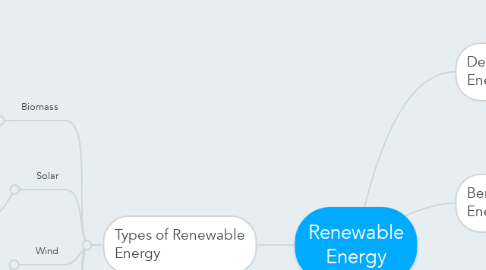
1. Types of Renewable Energy
1.1. Biomass
1.1.1. The use of organic materials and converting them into other forms of energy that can be used
1.2. Solar
1.2.1. Solar power (aka. photovoltaics) is one of the most popular, and fastest-growing, sources of alternative energy. Here, the process involves solar cells (usually made from slices of crystalline silicon) that rely on the photovoltaic (PV) effect to absorb photons and convert them into electrons.
1.3. Wind
1.3.1. Traditionally seen as very reliable, it harnesses the energy of the wind and turns it into electricity (through means such as turbines, windmills, etc).
1.4. Tidal
1.4.1. Also seen as very reliable, tides are very often easy to predict but is limited to geographic location and high start up costs.
1.5. Geothermal
1.5.1. heat energy is derived from the Earth – usually from magma conduits, hot springs or hydrothermal circulation – to spin turbines or heat buildings.
